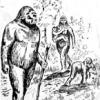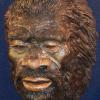New people will always keep joining the conversations. It's our duty to keep abreast of the facts and when they ask, give them the information. The Bigfoot world is it's own field. There is no university for it, so everyone is basically home schooled to learn. You have to read up your own, research and read or get out in the field. The only teachers are those that have already done that and share. It's actually a rule to expect people to ask questions and keep answering them no how many times it comes up. It forces us to be a well-informed community. Do opinions sometimes cloud the facts? Sure, but it adds to the critical thinking aspect of it.
I bought the paper, read it and thought some of the conclusions could be possible. Of course I didn't understand the data, so I asked questions. And all the answers keep coming back to the same explanation. The data present doesn't equal the conclusions. Could it someday? Possibly, but I didn't pay $30 for possibly. I don't dislike Melba. But I hate a scientific paper that doesn't backup it's claims. Without the data, the paper is a waste of a tree that BF could be peeking behind.
RR - The focus is on sample 26, because that is the only sample (that I know of) that has been tested elsewhere, so it has something to compare it to. If she released the data and/or full report that she did and that one of the individual labs did, it could be put to rest. I said the first night the paper was released, I wasn't worried too much about the journal or peer-review, because you can't fake DNA. Now on the flip side, the failure to release anything shows again... you can't fake DNA. What is her delay? The doubt involved only keeps the angst of the community at a heightened state for no reason.



